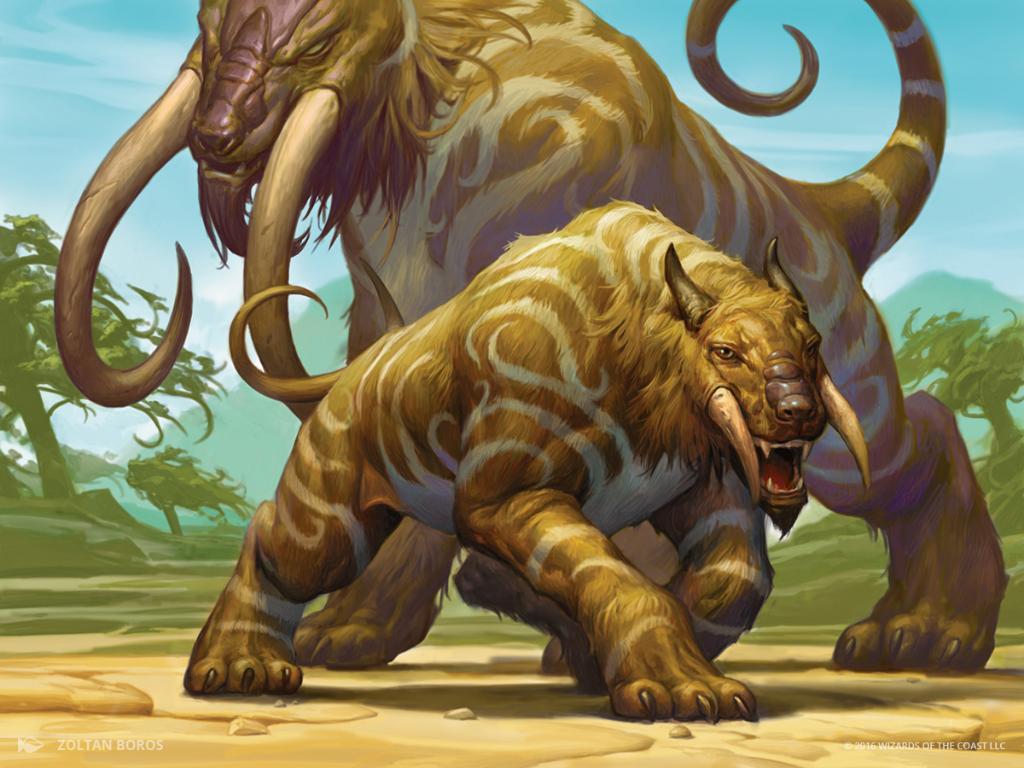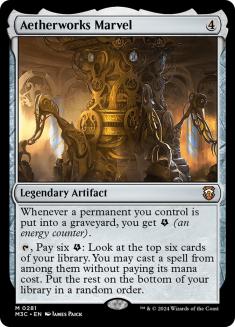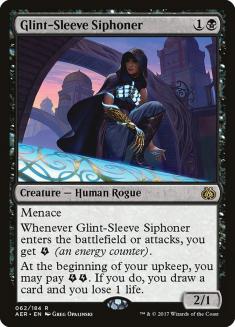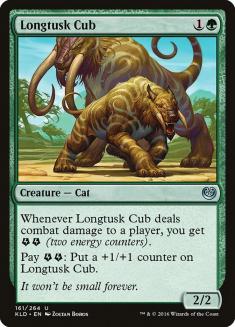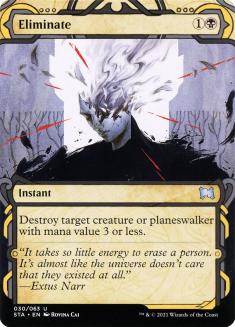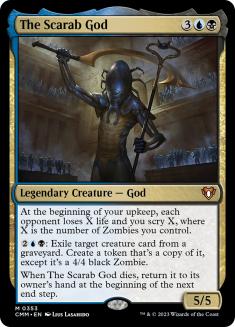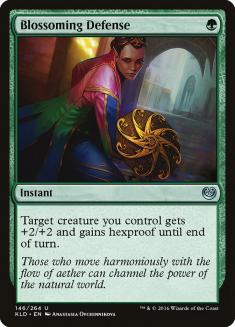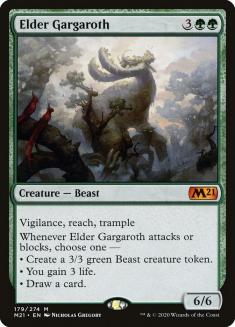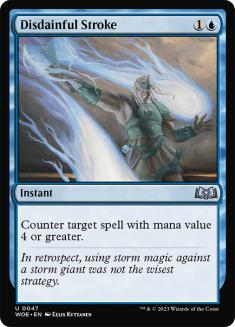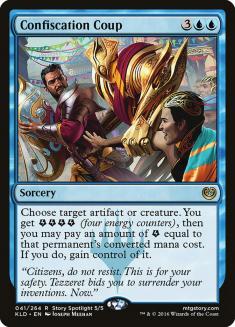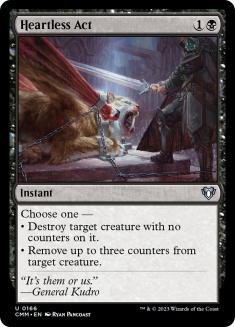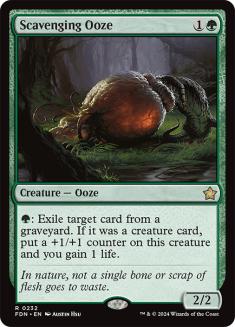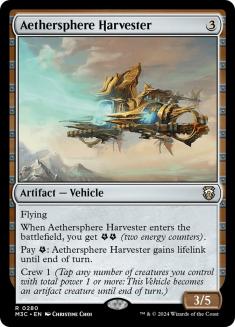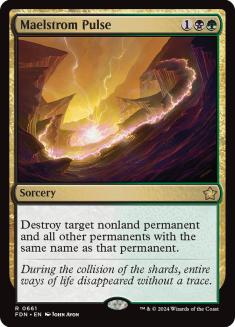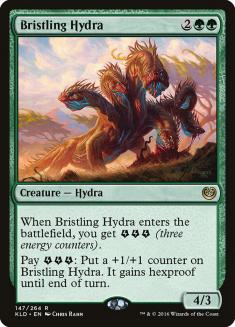Players have been trying a lot of different approaches to taking advantage of the energy mechanic in Historic since Kaladesh Remastered’s release, but nothing’s really emerged among the top decks. Most of the focus has been on Aetherworks Marvel, a card that I think is somewhat overrated.
Grafdigger’s Cage is widely played, and Aetherworks Marvel requires a lot of dedication to fuel consistently as well as powerful enough hits to justify the effort, so decks end up with weak cards like Woodworker’s Puzzleknot and uncastable cards like Ulamog, the Ceaseless Hunger. Sometimes you get your free wins off a Turn 4 Ulamog, but it’s not hard to build a deck that wins most of the time it curves out perfectly, and Marvel introduces a lot of unnecessary inconsistency and points of failure.
When Kaladesh was in Standard, Temur Energy got most of the attention, which I think lead people to focus on Temur as the way to take advantage of the mechanic, but in Historic, I think Sultai is the way to go.
It’s hard to play a midrange deck without Thoughtseize over one with Thoughtseize when given either option. Thoughtseize is the primary inspiration for playing black rather than red, but it leads to a totally different approach to the deck.
With Temur Energy, you play a lot of cards that generate energy, and when they die you have leftover energy so that the later energy cards you cast are stronger.
With Sultai Energy, the plan is to use Thoughtseize to clear the way to snowball with Longtusk Cub or Glint-Sleeve Siphoner rather than trying to ramp or bank two energy with a Servant of the Conduit. Servant of the Conduit leads to a gameplan where you try to get marginal value off trading throughout a game. It also plays best when you have a really good four-mana spell to ramp into like Chandra, Torch of Defiance.
Chandra is a strong card, but it’s best when you have two-mana red removal and big things to ramp into, and I’m not really interested in either of those. The natural curve offered by the best energy cards doesn’t really want you to ramp from two to four, so instead of just banking two energy off Servant of the Conduit, you’re looking to pull ahead with a two-mana creature that generates resources if it goes unchecked.
When trying to compete against recent cards, you can’t hope to win by nickel-and-diming your opponent for a few energy here and there, but Glint-Sleeve Siphoner can still run away with a game.
Toward the end of Kaladesh‘s run in Standard, energy decks often played four colors, since Aether Hub and Attune with Aether made it so easy. We could do the same in Historic, but with the tools available to black, I’m not sure which red cards I’d even want.
This deck has a lot of the same strengths that the typical Sultai deck in Historic has — Thoughtseize and cheap removal to support Uro, Titan of Nature’s Wrath, but instead of spending Turn 2 casting Growth Spiral to get to a Nissa, Who Shakes the World and Hydroid Krasis end-game, this deck casts a creature on Turn 2 in an attempt to get under opposing Sultai decks or keep pace with opposing aggro decks.
Nissa can catch up in a hurry, so trying to go under it is a dangerous proposition, but it also doesn’t play well from too far behind, and Sultai Energy’s lower curve allows it to hit game-swinging two-spell turns much faster, especially after sideboarding, where Disdainful Stroke offers a huge advantage to the player with the lower curve, even if your opponent has their own.
All right, enough theory. Let’s get a decklist in here:
Creatures (24)
- 1 Scavenging Ooze
- 4 Longtusk Cub
- 4 Bristling Hydra
- 4 Glint-Sleeve Siphoner
- 4 Rogue Refiner
- 2 The Scarab God
- 4 Uro, Titan of Nature's Wrath
- 1 Elder Gargaroth
Lands (22)
Spells (14)

The first thing you might notice is that this deck is pretty low on removal. Thoughtseize has to do some heavy lifting to make up for that, but there are large portions of the Historic metagame that this deck has to beat by trying to go under them, and you can’t do that if you draw too many reactive cards. With just Fatal Push and Eliminate, this deck can only answer cheap creatures and planeswalkers in Game 1. For everything else, you’ll have to rely on combat.
Glint-Sleeve Siphoner and Longtusk Cub are the cards you’re hoping to snowball with early, but if you’re playing against a deck with a lot of removal, you’re happy enough to trade those off and save your energy to protect Bristling Hydra while filling your graveyard for Uro and The Scarab God.
The Scarab God plays a really important role in this deck. You don’t have room for a bunch of copies Nissa and Hydroid Krasis, and without the combination of those two cards, neither one is as individually powerful as The Scarab God. The Scarab God is your way of going over the top against things you can’t answer.
Elder Gargaroth doesn’t quite offer the inevitability of The Scarab God, but reach and the ability to gain life on defense allow it to stabilize in some spots where The Scarab God couldn’t, and it also offers a bit more top-end without running into problems with the legend rule.
Blossoming Defense might look a little odd, but it’s the best way to play the snowballing protect-the-queen strategy this deck is looking for. The trick is the best way to convert card advantage proactively into a battlefield advantage if it can counter a more expensive removal spell or keep a creature on the battlefield after what would be a trade in combat.
As with most midrange decks, this deck hopes to pick up ground sideboarding against most opponents, so the sideboard is particularly important.
Rather than talking through the card choices in a vacuum, let’s look at how the deck positions itself against the top competition in Historic.
VS Sultai Midrange
Out
In
I expect the opponent to have a lot of Eliminates and Fatal Pushes, which make it hard for Longtusk Cub to accomplish much, since you don’t really want to invest energy in it even if you know it’ll live for a turn or two because a topdecked removal spell will undo all your hard-earned energy gains. Glint-Sleeve Siphoner is similarly fragile, but every time you can spend energy on it, you’ve really gotten somewhere and it gives you an energy immediately. Your basic plan is to stick a creature on the battlefield and then stop your opponent from resolving anything important with Disdainful Stroke.
Confiscation Coup is a huge trump for the matchup, as they’ll have a variety of amazing creatures and you can also steel a Nissa animated land, which will have haste, allowing you to kill a fresh Nissa if you have a Rogue Refiner or Bristling Hydra around to attack with the land.
VS Mono-Red Aggro
Out:
In:
Remove cards that ask you to pay life. Add removal and cards that allow you to gain life. Very straightforward sideboarding against red. Your gameplan is just to use your removal to preserve your life total and then block with big green creatures and take over the game with Uro, Titan of Nature’s Wrath or a five-mana creature.
VS Gruul Aggro
Out:
In:
Lifegain doesn’t get you as far against Gruul, which goes much bigger than Mono-Red, which means we want the higher-impact Confiscation Coups over Aethersphere Harvester, which is too small against them.
VS Jund Sacrifice (Jegantha)
Out:
In:
The plan here is to break up their engines to the best of your ability and then win with big creatures, which minimizes your exposure to Claim the Firstborn, which you can also protect yourself from with Blossoming Defense.
VS Azorius Auras (Lurrus)
Out:
In:
Your goal here is simple: lower your curve and maximize interaction. Glint-Sleeve Siphoner and Longtusk Cub are actually pretty good here, as you need to put pressure on them to punish them from trying to use their mana too reactively. By forcing them to keep up, you maximize your windows to push removal through their Alseid of Life’s Bounty and Karametra’s Blessing.
VS Rakdos Arcanist (Lurrus)
Out:
In:
As with Jund Sacrifice, sideboard to minimize exposure to Claim the Firstborn, which doesn’t really hurt your curve, since you’re replacing the energy creatures with removal and Scavenging Ooze. Confiscation Coup replaces Elder Gargaroth because I expect them to have clean answers to Elder Gargaroth, and taking a Lurrus of the Dream-Den or Kroxa, Titan of Death’s Hunger seems like a much bigger swing than just casting a creature.
VS Mono-Red Goblins
Out:
In:
Goblins isn’t exactly playing a control role against you, but it does have inevitability. You need to pressure them. Longtusk Cub shines here. Removal isn’t great, but it lets you get your Cub or Siphoner through early. Expensive threats don’t do much and you can’t afford to tap out into Muxus, Goblin Grandee if you have Disdainful Stroke up, so they’re easy cuts.
You’ll notice that against Sultai Midrange and Goblins, you’re using Disdainful Strokes to play a tempo game, but against all the other decks you’re taking on a control role, yet which threats you cut vary considerably. You never have the full energy package in Game 2. The energy cards do play well together, which is why this maindeck is functional, but while you always want your core energy producers — Attune with Aether and Rogue Refiner — you want to control what you’re spending your energy on to suit the matchup, so you only play the best things to spend that energy on against each opponent.
Sultai Energy offers the power of Uro, Titan of Nature’s Wrath with a little less clunk and a bit more flexibility that traditional Sultai Historic decks. As much as I like casting Hydroid Krasis, I love the more nimble feeling of a deck that can pivot like this, and I think it offers big gains in matchups that really reward proactivity, like Mono-Red Goblins.

